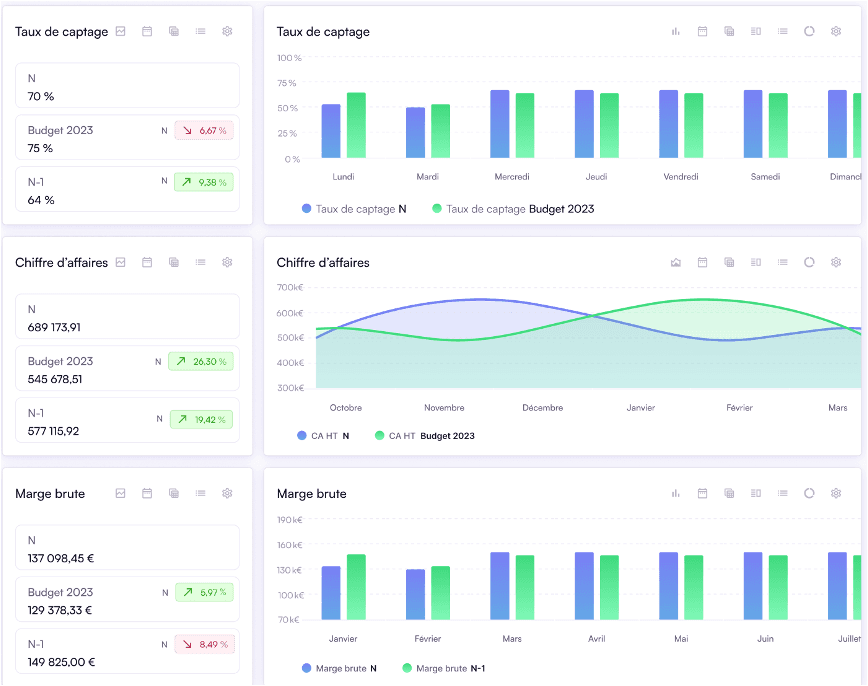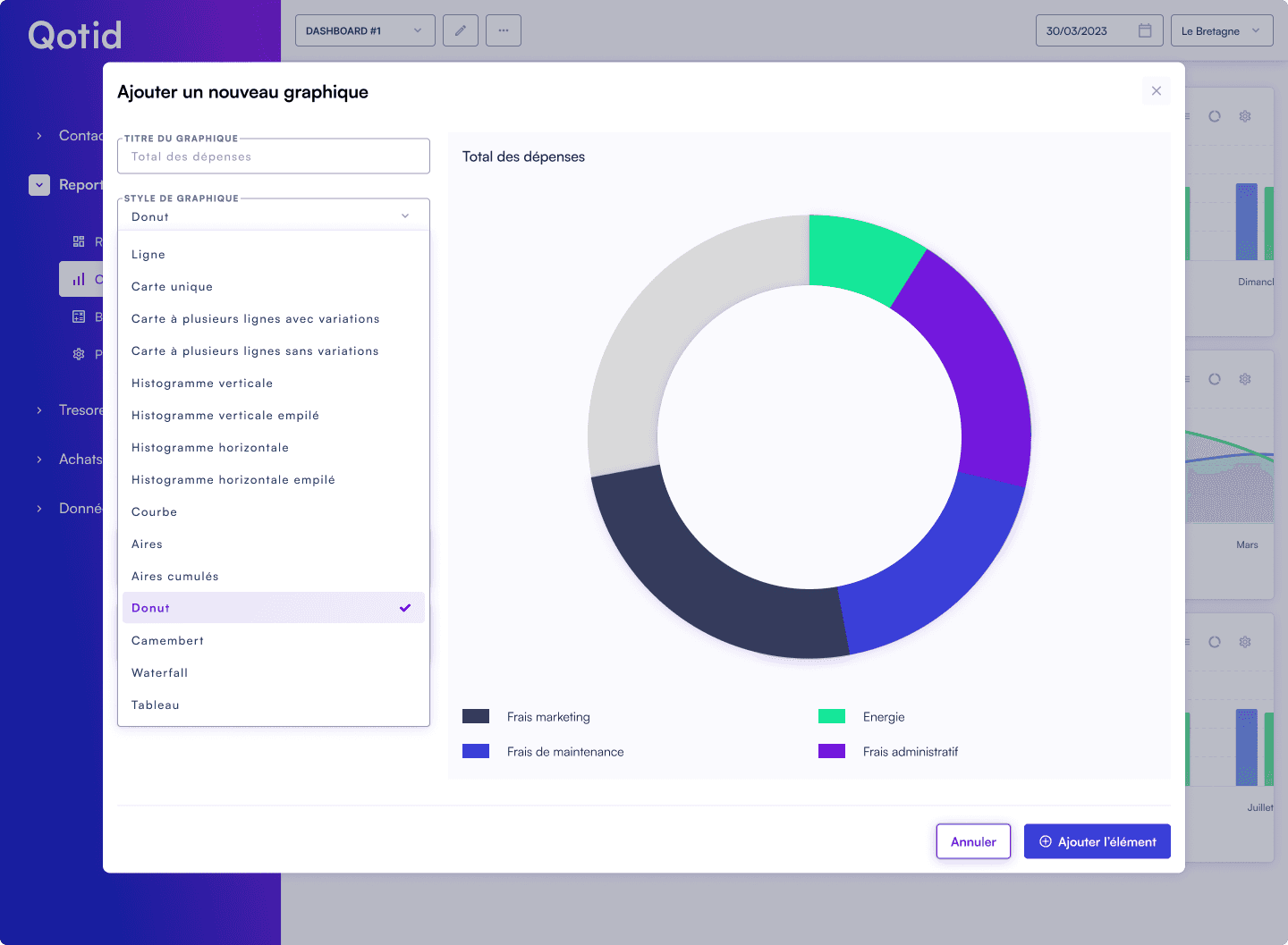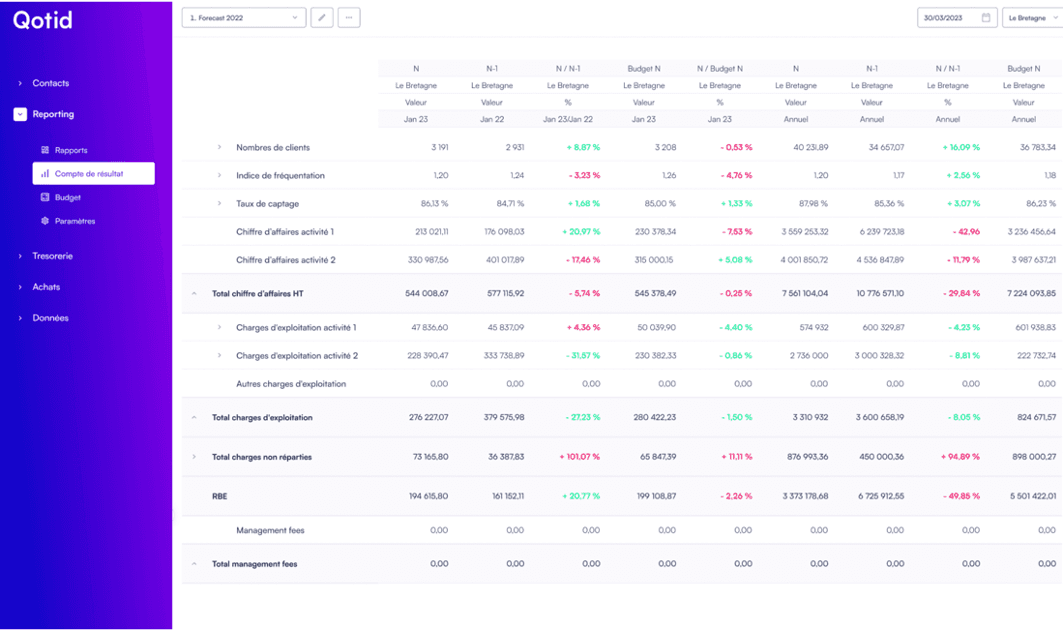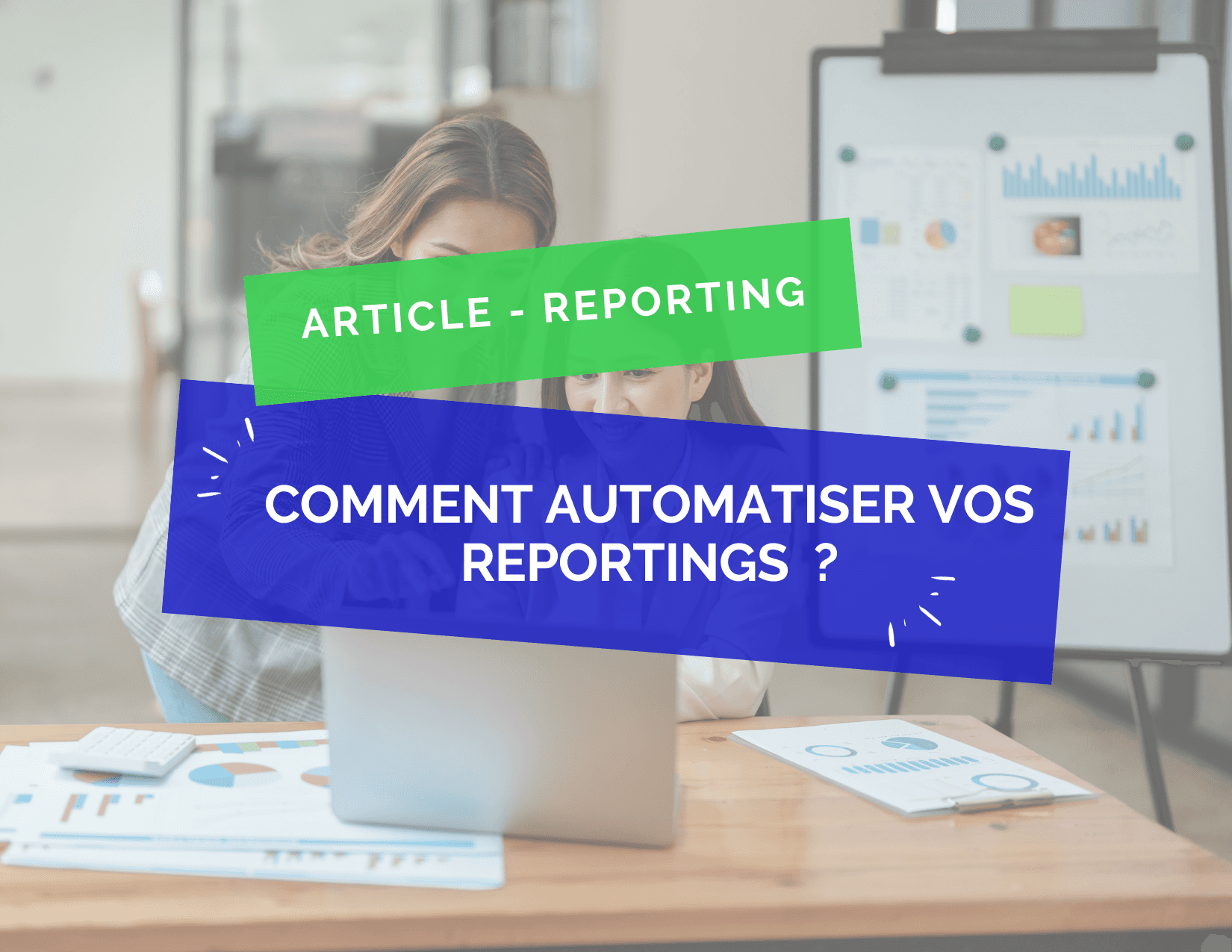How to automate your reporting?
lucas-fontaine
•
Jul 8, 2024
Efficiency and precision are key elements to ensure the success and growth of a company. Especially when it comes to managing a company's finances. All businesses should use reporting as a decision-making tool. However, it is not always easy to maintain reliable and up-to-date reporting. It is in this context that the automation of reporting becomes crucial.
It is the process that allows for the automatic generation of financial reports from existing data.
The automation of financial reporting plays a crucial role in managing corporate finances. It enables companies to monitor and control their financial performance more efficiently and accurately
In this article, we will explore in detail the benefits and implications of automating reporting in corporate finance management.
What is reporting automation?
Reporting automation is a process that automatically generates reports from collected data. This process uses software and technological tools to collect, analyze, and present data in a structured and understandable manner. The main objective of reporting automation is to simplify and accelerate the production of reports while minimizing human error.
In a professional context, financial reporting is essential for tracking performance, making informed decisions, and planning for the future. However, manually creating these reports can be very time-consuming and prone to errors. Reporting automation helps overcome these challenges by providing accurate and timely reports without requiring constant human intervention.
Why automate reporting?
More and more modern 100% web solutions such as Qotid today allow for the automation of reporting. This type of software dedicated to performance management offers many advantages and can solve several problems frequently encountered in managing and consolidating data.

The advantages of reporting automation
👉Time Savings: Reporting automation saves valuable time. Indeed, collecting and presenting data can be very time-consuming.
Moreover, once you have made your settings, you generally do not need to adjust anything further.
👉 Data Reliability: Automation minimizes human errors that can occur during data collection. Automated reports are therefore more reliable and accurate.
👉 Accessibility: Automated reports can be easily accessible to all members of the company, promoting transparency and collaboration.
Some tools even offer customizable reporting validation circuits.
👉 Real-time Monitoring: Automation allows for real-time monitoring of key performance indicators (KPIs), facilitating decision-making.
Problems that reporting automation can solve
👉 Management of large volumes of data: As a company grows, the volume of data generated also increases, making reporting automation necessary to effectively manage this information.
👉 Data Complexity: It is not always obvious to determine which data to present and highlight in a clear and understandable form for all.
Automating reports simplifies the analysis and presentation of data, making reports more attractive and actionable.
👉 Data Updating: Automation ensures regular and automatic updates of data, ensuring that a relevant and up-to-date report is always at hand.
👉 Data Security: Automation can also help strengthen data security by limiting the risks of loss or theft.

Challenges related to reporting automation tools
Reporting automation, while beneficial, also presents challenges and limitations.
👉 Initial cost varies depending on the type of tool chosen: A reporting management and automation software represents a cost for the company, which depending on its size might or might not afford its acquisition.
That is why we advise prioritizing cloud solutions with or without commitment to avoid a too significant initial investment.
👉 Be wary of technical complexity: Some tools, such as Power BI for instance, require a certain level of technical expertise for setting up and maintaining systems. This can be a challenge for companies that do not have dedicated personnel as they will generally need to call on an external provider when their needs evolve over time.
How to automate your reporting?
A relevant and reliable reporting generally relies on two main points:
1. An effective tool/software
2. A precise idea of the data to be collected in order to establish a suitable automation process
Business Intelligence (BI) software is particularly suited for automating reporting. This type of tool is designed to collect and analyze data from various sources. A BI tool can generate automatic reports based on these analyses by categorizing different data into defined sections according to your needs.
The reporting automation process
The reporting automation process can vary depending on the specific needs of the company and the tools used. However, the general process typically includes the following steps:
👉 Defining reporting needs: This step involves identifying the necessary information for reports and determining how this information will be used.
👉 Data Collection: Automation tools are used to collect the necessary data from various sources.
👉 Data Processing and Analysis: Collected data is processed and analyzed to extract relevant information.
👉 Report Creation: Extracted information is used to create reports. These reports can be generated automatically at defined intervals.
👉 Report Distribution: Generated reports are distributed to concerned parties, either by email or through an online portal.
👉 Review and Improvement: The reporting automation process is regularly reviewed and improved to ensure its efficiency and accuracy.

Steps to automate reporting?
1. Planning and Preparation
The first step in automating reporting is planning and preparation. This phase involves clearly defining the objectives of automation, identifying the necessary data, and understanding how it is currently collected and processed. It is also important to determine the key performance indicators (KPIs) that will be used to measure the effectiveness of automation.
Preparation also involves ensuring that all necessary data is available and accessible. This may require working with different departments or data providers to ensure that all necessary information is collected consistently and reliably.
2. Selection of Tools and Technologies
The second step is selecting the appropriate tools and technologies. There are many available tools for report automation and dashboards, ranging from specialized solutions to business intelligence platforms to data visualization tools.
The choice of the appropriate tool depends on several factors, including the specific needs of the company, the available budget, the technical skills of the team, and compatibility with existing systems. It is important to take the time to evaluate different options and choose the one that best meets the company's needs.
3. Implementation and Monitoring
The last step is implementation and monitoring. Once the tools and technologies have been selected, they must be properly installed and configured. This may involve working with software vendors or consultants to ensure everything is set up correctly.
Once automation is in place, it is important to monitor it regularly to ensure it is functioning as intended. This may involve periodically checking data, monitoring KPIs, and addressing issues that may arise. It may also be helpful to schedule regular system reviews to ensure it continues to meet the company's evolving needs.

Case Study: Automating Reporting for a Multi-Establishment Group
You will understand that automating the financial reporting of a company requires several steps. And when it comes to a group with multiple establishments, the process becomes a bit more complex. This is the case for Julien B., a management controller of a hotel group with several franchises, most of which use different business tools (PMS). Julien and his management struggled to collect reliable data from different sources and maintain a clear and centralized view of the group's key performance indicators (KPIs). The group then decided to work with Qotid, a SaaS financial management solution, through which he can now:
👉 Centralize the financial data of all their establishments on a single platform and transform it into relevant KPIs.
👉 Track performance (revenue, expenses, etc.) by establishment and consolidated in real time.
👉 Save time in the budgeting process.

F.A.Q:
1. What is reporting automation?
Reporting automation is a process that automatically generates financial reports from existing data using software and technological tools to collect, analyze, and present data in a structured and understandable manner.
2. Why automate reporting?
Reporting automation saves time, improves data reliability, facilitates access to reports for all company members, allows for real-time tracking of key performance indicators, and solves issues related to managing large volumes of data, data complexity, data updating, and data security.
3. How to automate your reporting?
To automate reporting, an effective tool/software and a clear understanding of the data to be collected to establish a suitable automation process are needed. Business Intelligence (BI) software is particularly suited for automating reporting. The reporting automation process generally includes the following steps: defining reporting needs, collecting data, processing and analyzing data, creating reports, distributing reports, and reviewing and improving.
In conclusion
Automating the production of reports is an essential process for managing corporate finances. It offers many benefits, such as improving efficiency, reducing errors, and allowing a focus on more strategic tasks. However, its implementation is not without challenges. It is necessary to carefully plan and prepare the process, choose the right tool or software, and establish effective monitoring. Despite potential obstacles, such as resistance to change or technical problems, these challenges can be overcome with good project management and proper training. In summary, reporting automation is an unavoidable evolution for companies wishing to optimize their financial management.


